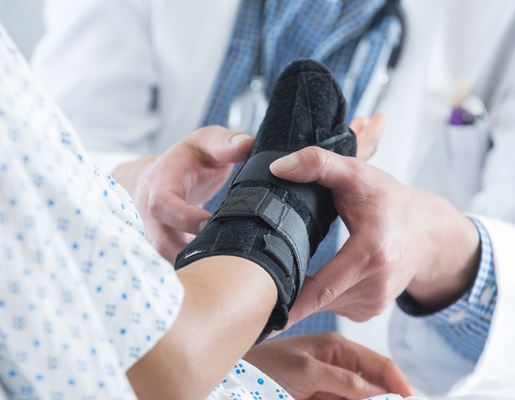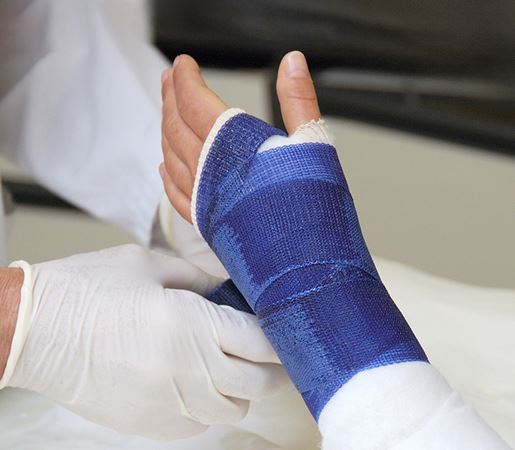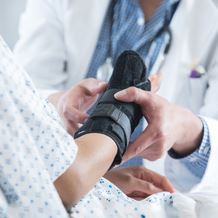Carpal Tunnel Surgery - Day of Surgery
- Home
- Services
- Orthopaedics
- Knowledge Hub
- Carpal Tunnel Surgery – Day of Surgery
Carpal tunnel surgery is a successful medical procedure that relieves the painful symptoms associated with carpal tunnel syndrome. The surgery works by cutting through the wrist ligament which forms the top of the carpal tunnel.
This immediately releases the pressure that has been exerted on the median nerve, causing pain and discomfort in the hand. After surgery, the ligament grows back together more loosely which naturally creates a bigger space in the carpal tunnel. This procedure allows the wrist nerve to function properly once more.
Types of Carpal Tunnel Surgery
Carpal tunnel release surgery is one of the most common hand surgeries performed and is widely regarded as a successful way to treat this progressive disease, and prevent permanent nerve damage. The operation can be performed in two different ways, and your doctor will discuss with you the most appropriate surgery for your condition. Both approaches are usually performed as outpatient procedures, which means you can return home the same day.
- Open surgery – The wrist ligament is divided to create more room in the carpal tunnel, allowing the median nerve to resume ordinary function.
- Minimally invasive surgery (endoscopic) – This procedure works in exactly the same way using a camera and tiny tools. They are inserted through two smaller cuts, which usually means a faster recovery.

Before Surgery
Having observed a 6-8 hour fast, you will be asked to arrive at hospital in time to complete your clinical admission. Your anaesthetist will explain the type of anaesthetic to be used and the procedure involved, and your surgeon will be available to answer any final questions before the carpal tunnel surgery begins. The operation itself is usually performed with a local anaesthetic and may only take around 20-30 minutes.
During surgery
The goal of surgery is to reduce painful symptoms and restore normal function to the hand by expanding the carpal tunnel, and creating more space for the median nerve to function. During open surgery, your doctor will make a two-inch incision to expose the wrist ligament which forms the roof of the carpal tunnel. By dividing this ligament and enlarging the space in the carpal tunnel, the median nerve is no longer restricted and can behave normally. If carpal tunnel surgery is performed endoscopically, the same wrist ligament is accessed by making two smaller incisions. Through the first, a camera is inserted using a narrow tube and this is used to guide the doctor during surgery. Special surgical instruments are then inserted through the second incision to complete the operation. When the surgery is complete, the wound is closed and bandaged.

After Surgery
After carpal tunnel surgery, your hand is likely to be bandaged securely or in a splint to help with your recovery and prevent you moving your wrist. After the surgery is complete, you will be transferred to the recovery room until your doctor advises that you are able to return home. This is usually one to two hours after surgery but will depend on the type of anaesthetic that has been used. Patients are usually discharged the same day along with a personalised rehabilitation program, wound care information and medication to help with the pain. Recovery can take between six-twelve weeks.
What to look out for
- Keep your hand elevated after surgery, using an ice pack and pain relief to help with painful symptoms.
- It is normal to feel a tingling sensation as your wrist recovers from the anaesthetic.
- Keep your wound clean and dry by covering it when you shower or bathe.
- Wiggle your fingers regularly to help reduce swelling and stiffness, and to keep your blood flowing.
- Recovery can take longer if you have suffered from severe carpal tunnel symptoms, or conditions such as diabetes.
- Check with your therapist before beginning your rehabilitation exercises – these are an important part of your recovery and will ensure you restore function and mobility to your fingers.
- In more severe cases, surgery can be helpful but there may still be some occasional residual symptoms such as numbness, tingling and pain.

Related Content

Carpal Tunnel Surgery – Your Recovery
Carpal tunnel syndrome can vary significantly by patient, and so can recovery from surgery.
Read More
Carpal Tunnel Release Surgery
A common medical procedure to relieve pressure on the median nerve.
Read More
Find a Specialist
Talk to our world-leading orthopaedic specialists about the most suitable treatment options.
Read More